
Beginning of the Security Lab There are a few options, when it comes to Kali, and running it as a VM. Available for download are, prebuilt VM images, as well as different prebuilt ISO’s, depending on the environment. Here, I’m downloading the full ISO, and going to install manually, apply all outstanding updates, and install/configure SSH.
Go to Kali.org download section and select you desired download.


Create the Virtual Machine I’ve opened a VMware HTML5 client session with the Host, as I have not yet installed the VSCA. Click Create VM. Name the VM, select VM options, and configure system resources. The only non default item I configured, was to change the CD/DVD to DataStore ISO, and mount the Kali ISO, downloaded earlier.
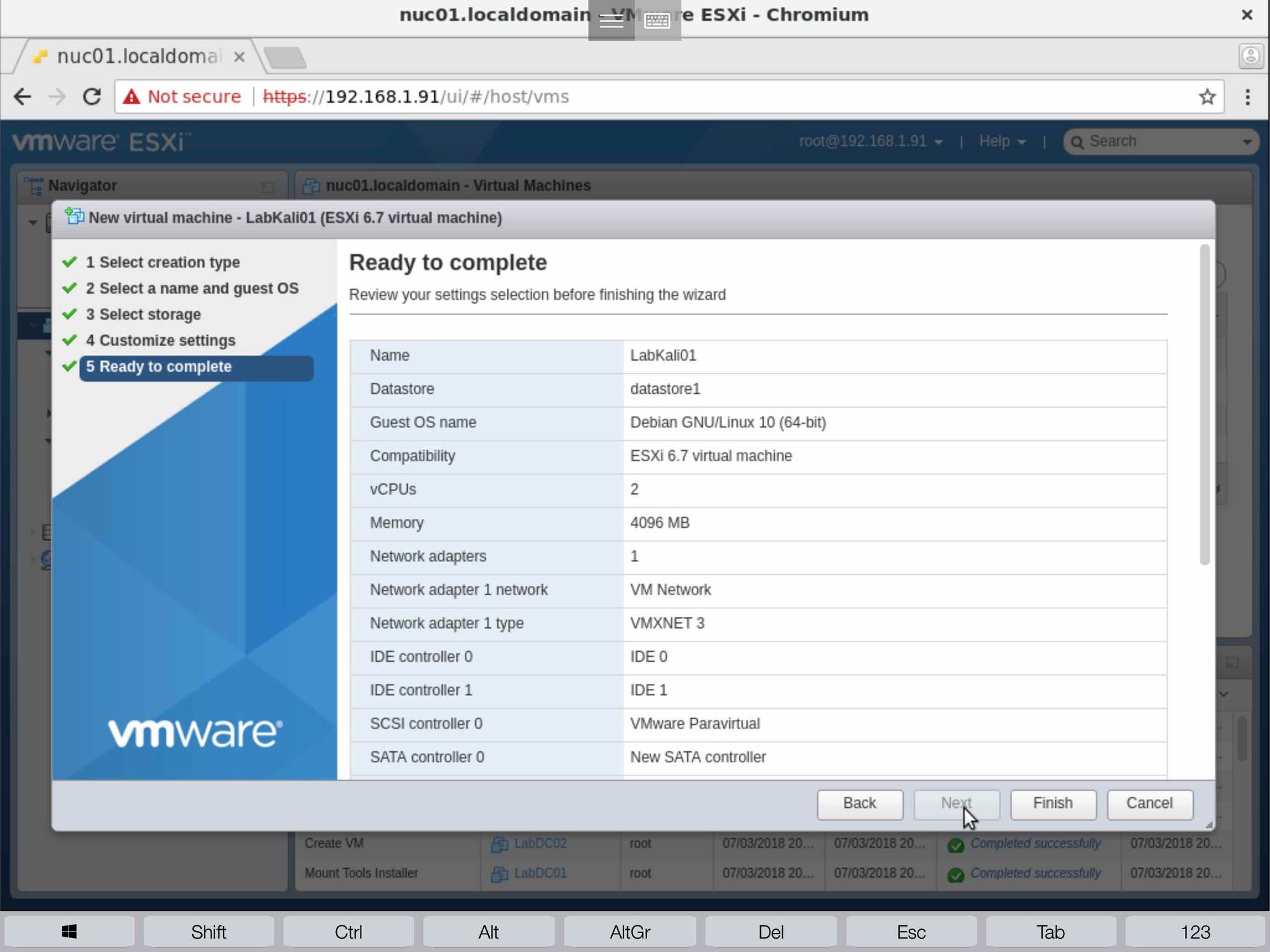
Start the VM, and click on the little remote window, to open a remote console connection tab.

When the boot menu appears, select Install

Set a Language

Select a Location

Choose a Keyboard


Enter the Lab Domain Name

Set a Root password
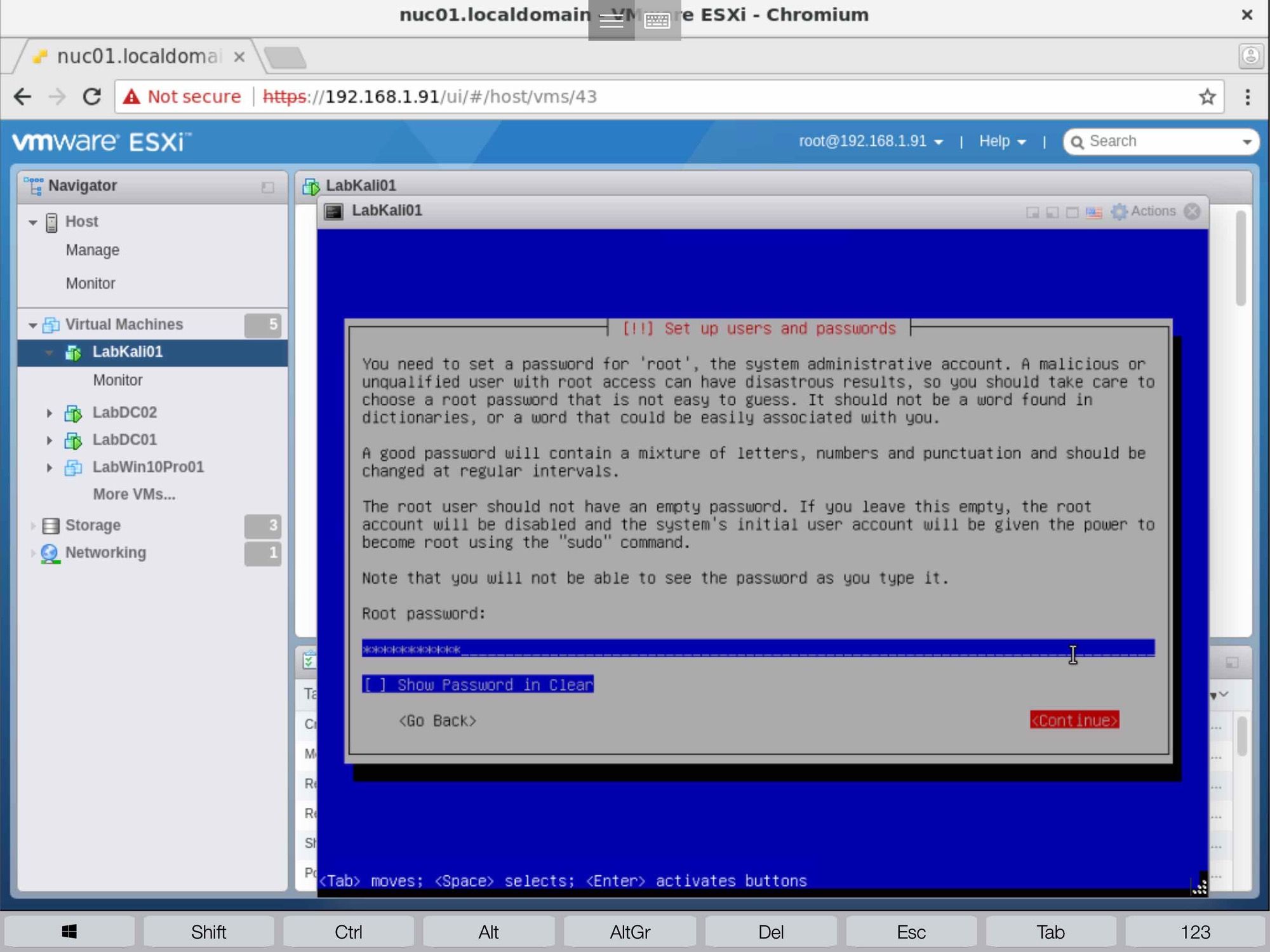
Reenter the Root password
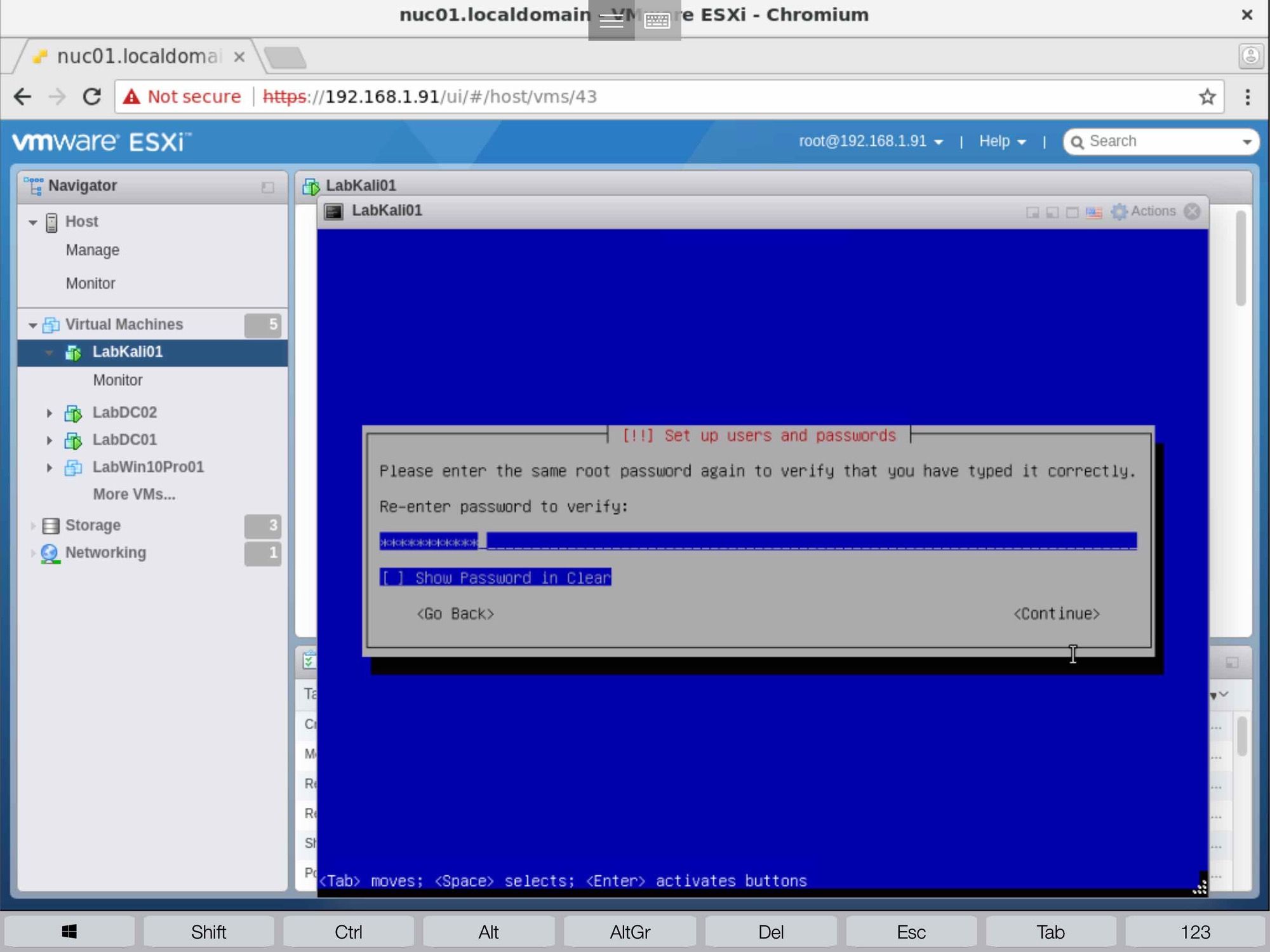
Set Time Zone

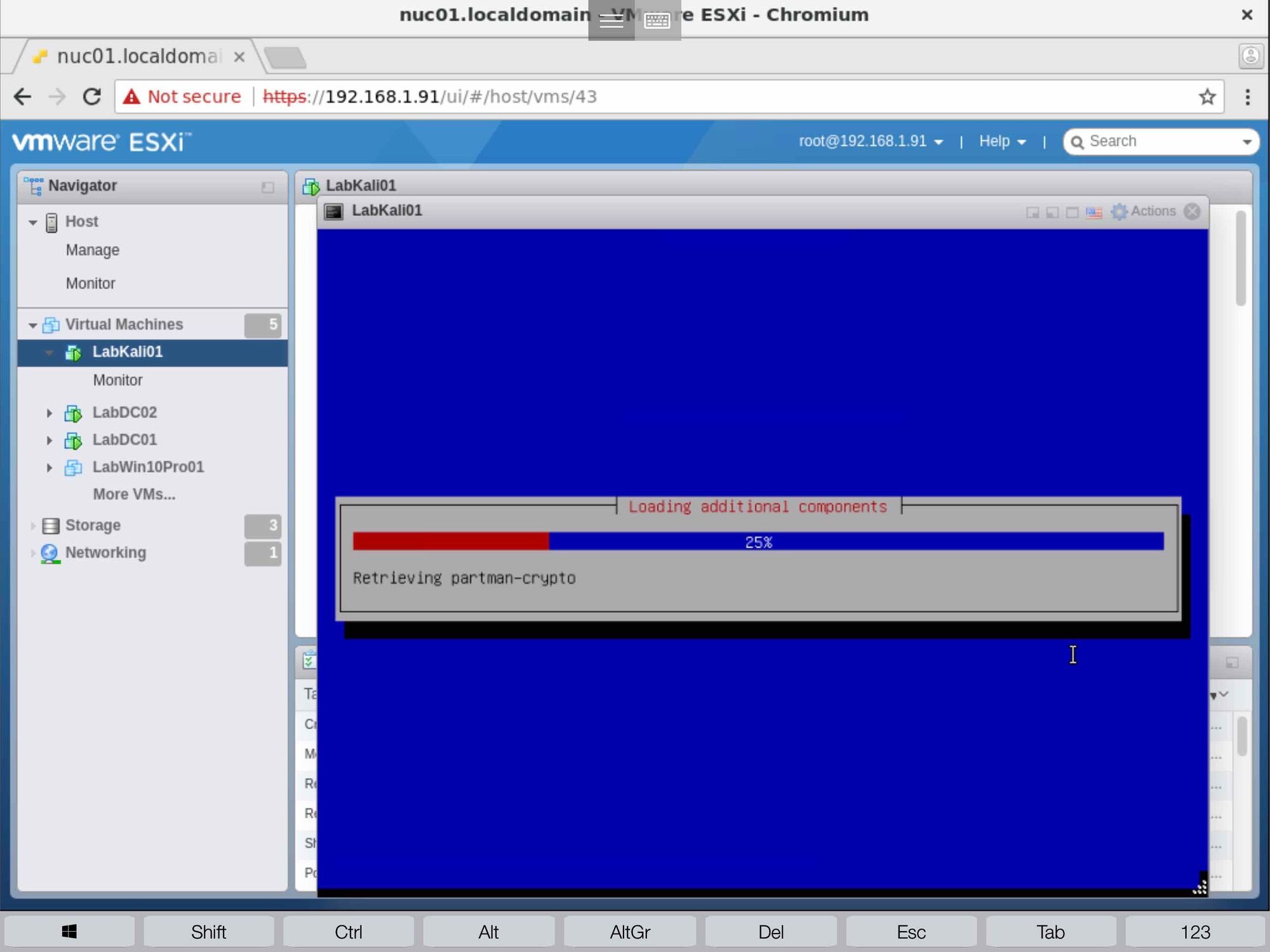
Setting up the disk partitions, I’m selecting Guided setup with LVM. I’ll explore best practices, and different partition scheme’s in a future lab.

Select the disk to be partitioned

Mentioned above, I’ve chosen to put everything on one partition

Select Yes, to write changes to disk

Select Finish Partitioning, and write changes to disk
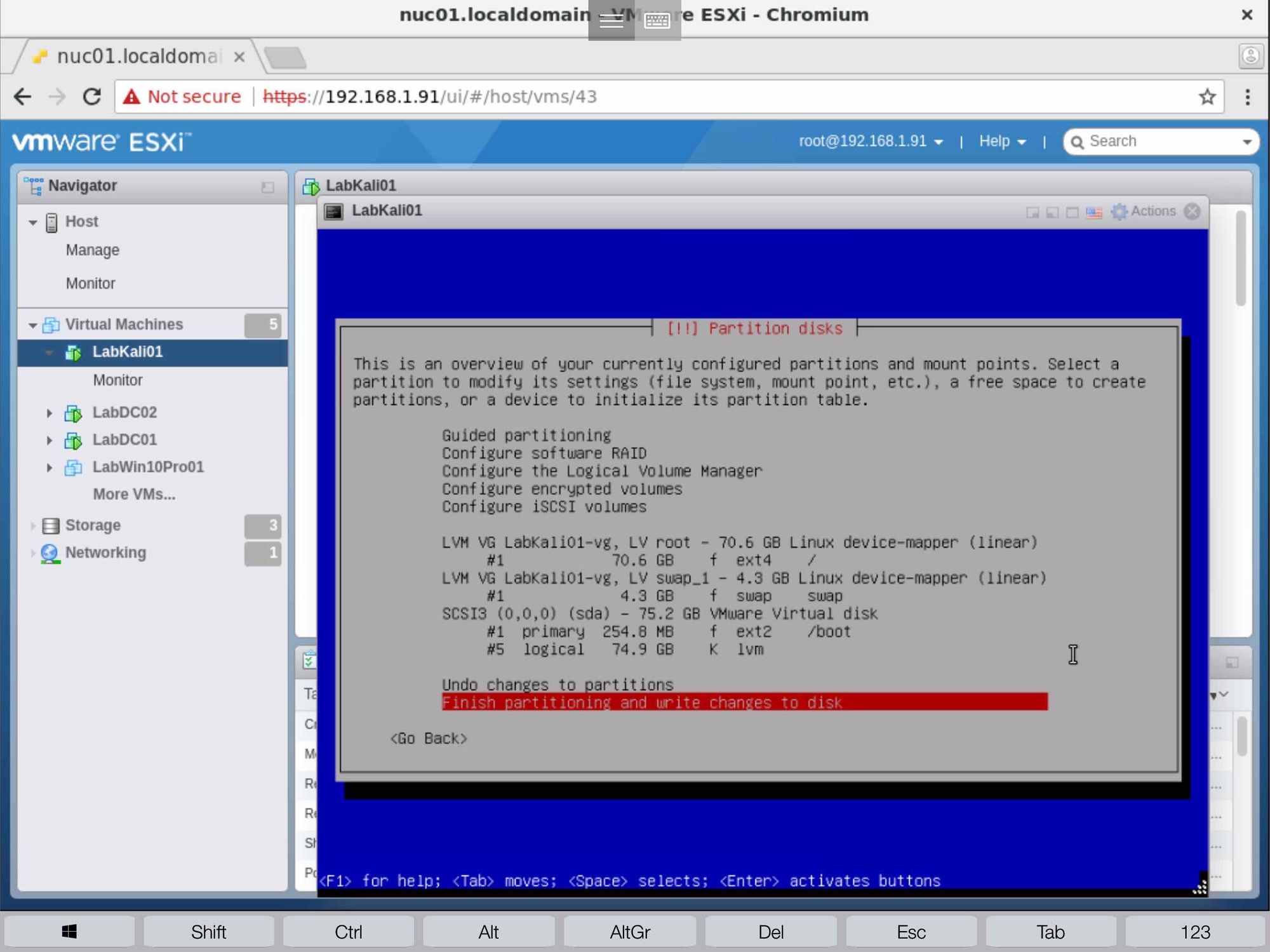
Select Yes, to continue

Installing

Select No to Network Mirror

Installing Grub

Select Yes, to install Grub to MBR

Select drive to make system bootable

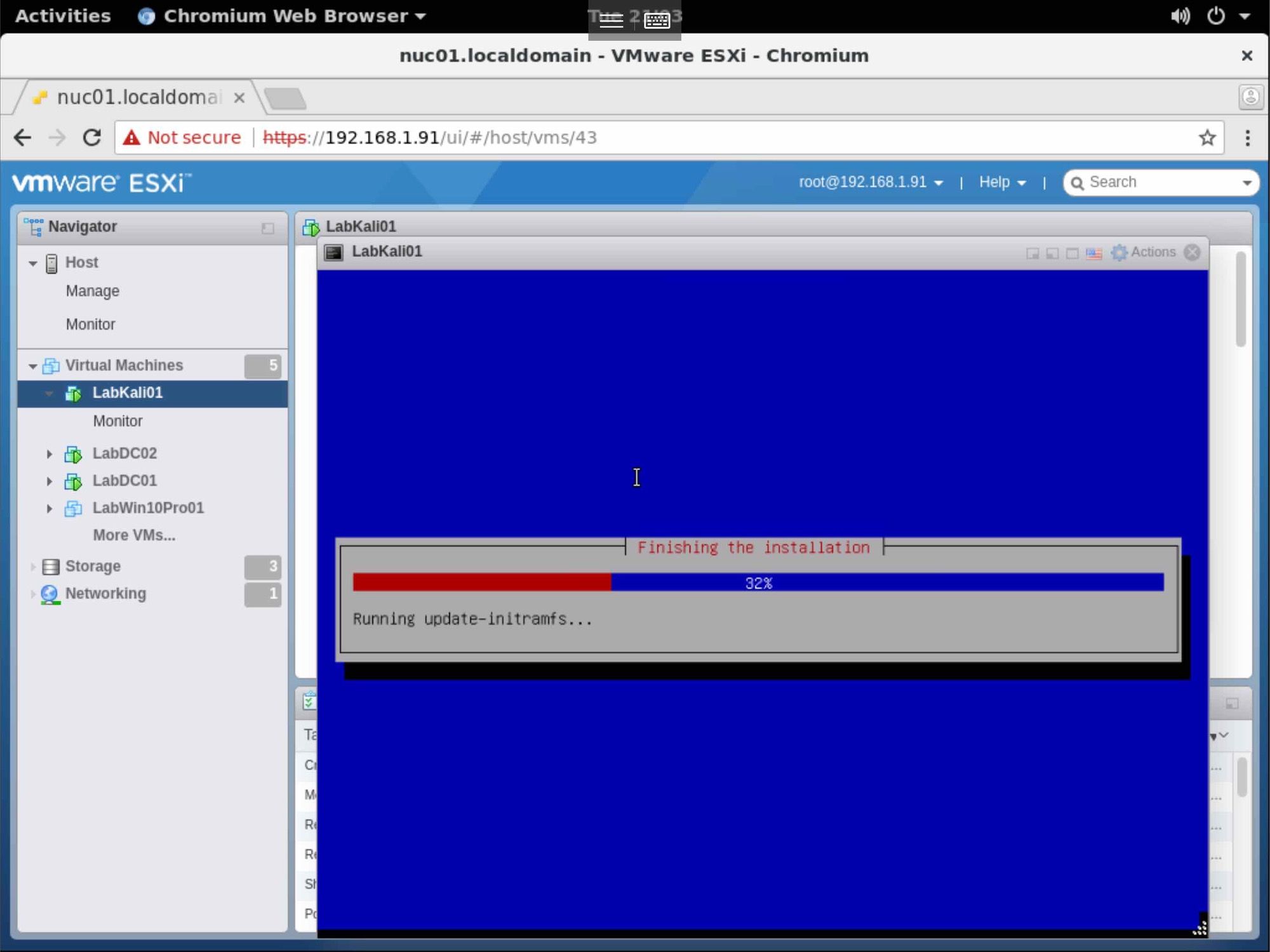
Installation Complete, select Continue
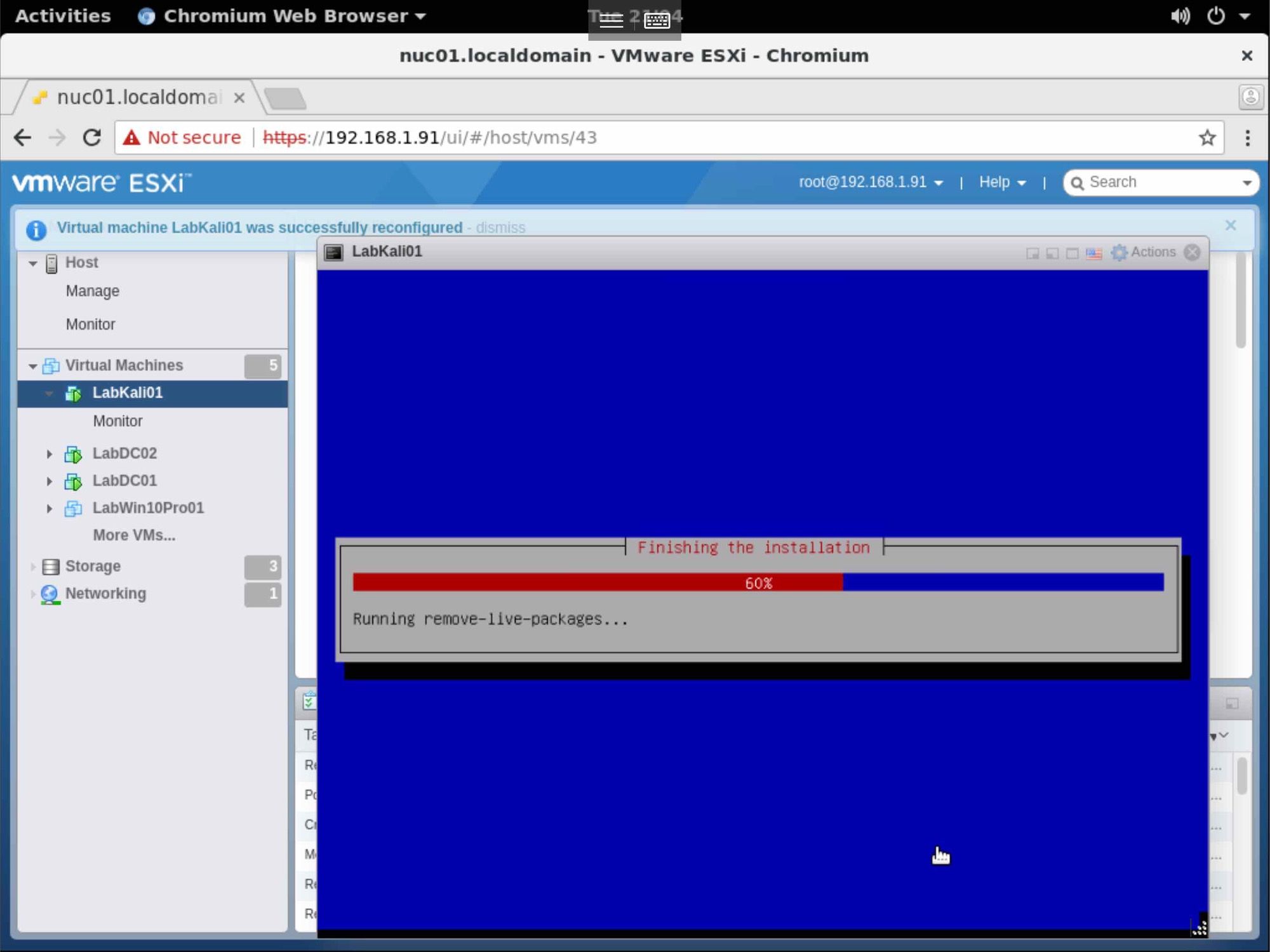
Rebooting

System is up

To check for, and apply all available updates, type the following: apt-get update && echo ‘y’ | apt-get upgrade && echo ‘y’ | apt-get dist-upgrade && echo ‘y’
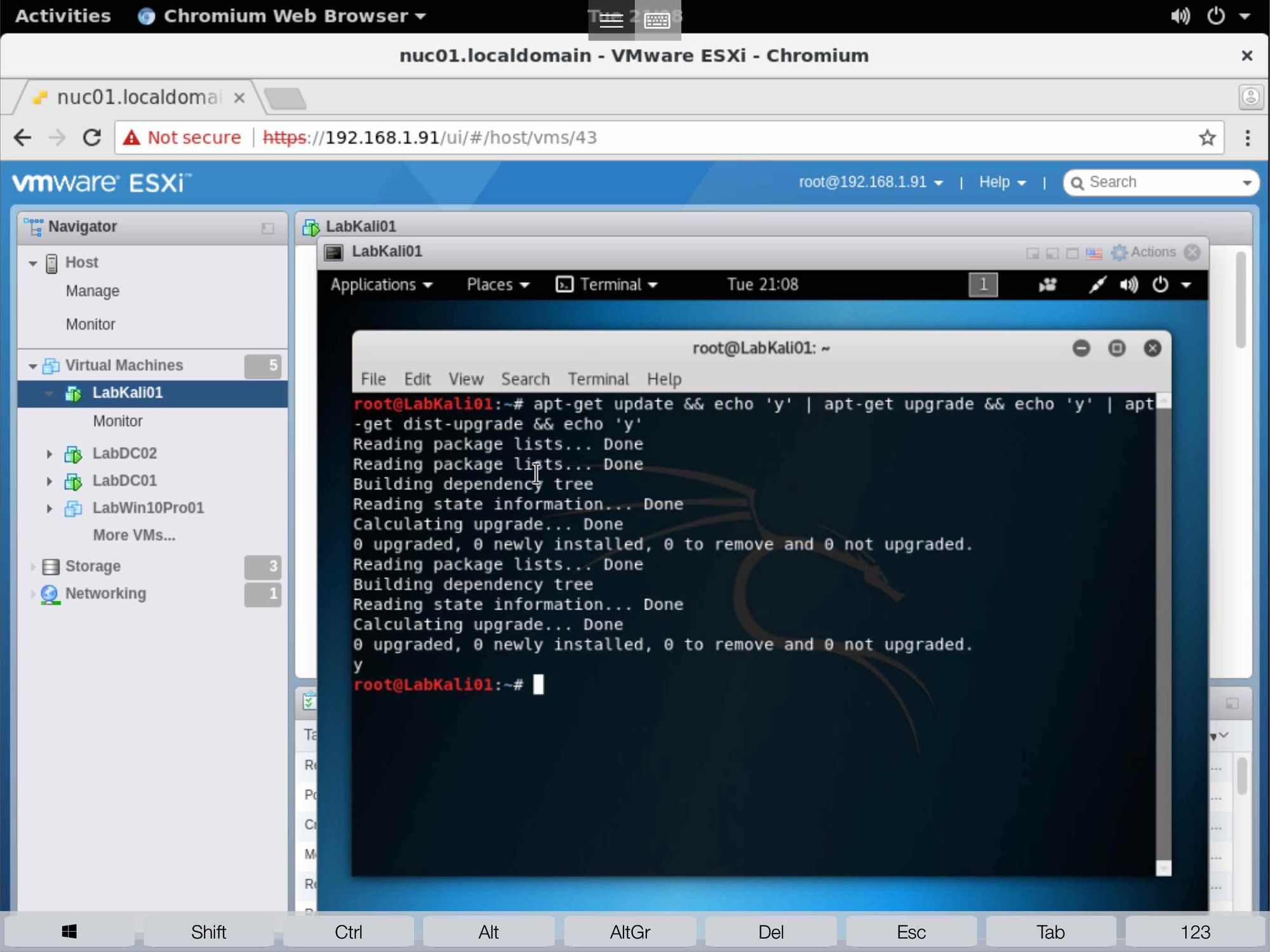
Next, I’m setting up SSH. First thing is to create a key. Type: ssh-keygen Answer file in which to save the key, and assign a password

Since we are using Root to login, edit the /etc/ssh/sshd_config. Change the option PermitRootLogin to Yes. Save and Exit the file

Restart the SSH service by typing: service ssh restart

Open your SSH client of choice on another device, and test SSH to Kali

Accepted the thumbprint, and we are in!

Now with Kali installed, I have a ton of stuff to explore and lab!
 Install Ubuntu 18.04 Virtual Machine in a VMware ESXi 6.7 Environment
Install Ubuntu 18.04 Virtual Machine in a VMware ESXi 6.7 Environment
 Macchanger Utility, and Usage
Macchanger Utility, and Usage